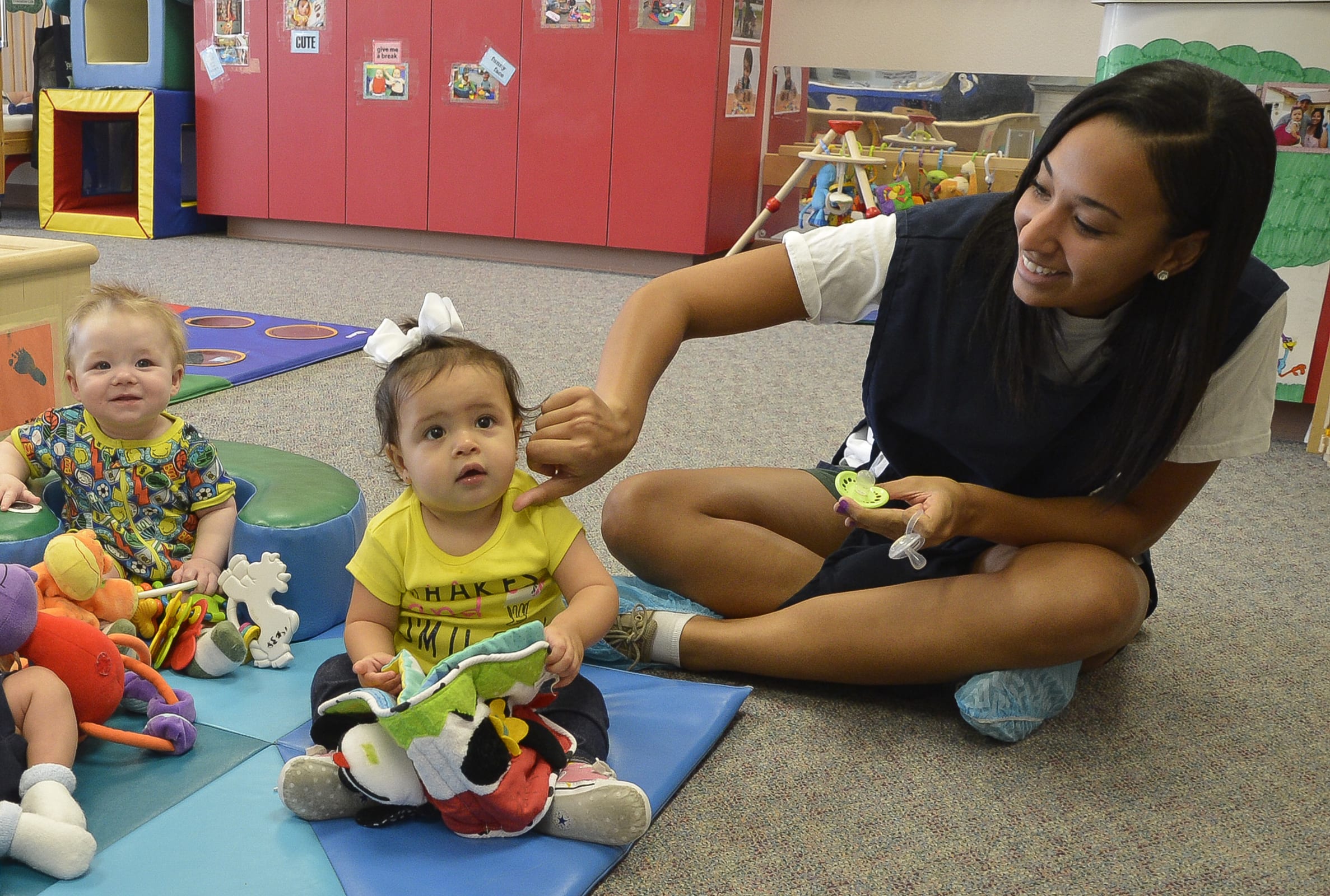Parents looking for early childcare sometimes have a lot to consider. How do you find the right fit for your family?
Take into consideration your child’s temperament, what you want them to learn or experience and the values and approach of the caregivers, says early childhood educator Dr Sue Cherrington.

Photo: www.luke.af.mil
Childcare centres (government regulated)
At least 50 percent of staff have to be qualified and registered early childhood teachers.
They have varying philosophies, hours of business and age ranges.
Plusses:
- More than one adult around means additional support if your child has behavioural challenges.
- More kids to interact with, including older kids which is helpful for learning.
Things to think about:
What are the centre's systems for communicating about daily events and sharing what they've been doing and learning?
What kind of relationship do the caregivers seek to have with parents?
Does the centre make it easy for breastfeeding mothers to visit?
How flexible are they if your requirements change?
Home-based childcare, such as PORSE (government regulated)
No minimum qualification required for caregivers.
Plusses:
- Small groups of children.
- Retains a "family feel".
- Kids do the kind of neighbourhood activities they might do with parents, anyway.
Things to think about:
Does the caregiver have a first aid certificate?
"I'd want somebody to have done a first aid certificate relatively recently because young children are very good at putting things in their mouths," Cherrington says.
Has everyone living in the home had a police check?
"It's probably not easy to ask a friend if they'd be willing to have a police check, but these are things you want to be thinking through."
Own home care (unregulated and not government-funded)
Nannies, whanau or informal arrangements between friends.
Other things to consider:
Environment
If possible, find an environment where your child can be active and have access to grassed areas and trees, Cherrington says.
"[A place with] lots of movable equipment [where] it's okay for them to rearrange and move things."
Look for an environment where kids have the option of working in small groups or spending one-on-one time with a caregiver or teacher, rather than being part of a herd.
Your child's temperament
Some kids are feisty and fearless – 'See you, Mum, see you, Dad, I'm off' with barely a backward glance.
At the other end of the scale are children who are slower to warm up and need help settling in.
Cherrington says her son was the latter kind.
"Once I realised that, as a parent, it then took a whole lot of that pressure away and I knew I just needed to build into our routine that at the beginning of the day we took ten minutes to settle and have a story, do a puzzle together so he was able to make that transition from home to the centre comfortably and very happily."
Values
Look at the caregiver or teacher's values and how they match yours.
"What's it important for you to have your child learn while they're in an early childhood service?"
This could be developing good social skills, a headstart on literacy and numeracy skills or immersion in their own culture.
Approach
With very young children what happens in a day can have a big impact, so look at how routine events are woven into the daily programme.
"For very young children, routine events such as feeding, changing nappies, settling to sleep, are very big parts of their daily lives."
The mood around these routines can have a powerful effect – positive, if they're "warm caring moments" or negative, if they're "rushed and factory-lineish" – will tell you a lot about the caregiver or caregivers' general approach, Cherrington says.
Dr Sue Cherrington is Associate Dean at the School of Education at Victoria University, Wellington and has been involved in early childhood education for over 40 years.
Check out a full collection of Nine to Noon parenting stories here.



